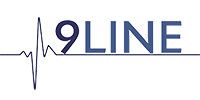As hospitals and healthcare facilities experience an increase in occupancy, particularly during certain times of the year, the need for robust emergency communication systems becomes paramount. E911 compliance, which includes Kari’s Law and Ray Baum’s Act, plays a crucial role in ensuring the safety and well-being of patients, staff, and visitors in these critical environments.
E911 Compliance
E911 compliance refers to the adherence to regulations that require accurate and automatic transmission of location information to emergency services when a 911 call is made. In healthcare settings, where every second counts, E911 compliance is essential to expedite emergency response times. The precise location information helps first responders reach the scene promptly, facilitating quicker interventions and potentially saving lives.
Kari’s Law
Kari’s Law, named after Kari Hunt, who tragically lost her life in a hotel room due to a 911 call complication, mandates direct access to 911 services without the need for additional dialing codes, such as pressing ‘9’ for an outside line. This law ensures that anyone, regardless of familiarity with the phone system, can swiftly connect with emergency services. In healthcare facilities, where stress and urgency are common, Kari’s Law simplifies the process of seeking help, reducing the likelihood of communication errors during emergencies.
Ray Baum’s Act
Ray Baum’s Act builds on E911 compliance by emphasizing the importance of accurate location information. Named after a congressional staffer who passed away suddenly, this act focuses on improving 911 services, including location accuracy for calls made from multi-line telephone systems (MLTS). In healthcare settings with sprawling complexes and numerous phone lines, this legislation ensures that first responders receive precise location details, enabling them to navigate large facilities efficiently during emergencies.
Meeting the Challenge of Increased Occupancy
Hospitals and healthcare facilities often experience a surge in occupancy during certain times of the year, such as flu seasons or other health crises. These peak periods amplify the need for robust emergency communication systems. E911 compliance provides a comprehensive framework for addressing the challenges posed by increased occupancy, ensuring that emergency services can swiftly and accurately respond to calls for help.
With all that in mind, the importance of E911 compliance in healthcare environments cannot be overstated. These regulations not only enhance emergency response capabilities but also contribute significantly to the overall safety and well-being of individuals in hospitals and healthcare facilities, especially during times of increased occupancy. By prioritizing and implementing these measures, healthcare institutions can create a secure environment where rapid and effective emergency communication is a top priority.

